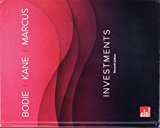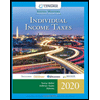
A
To explain: Objectives and constrains of the investment policy.
Introduction: F is the president of the R firm, having  as a salary. She has no family and no residue debts. For the investment some constrains are used like risk management, benchmarks etc.
as a salary. She has no family and no residue debts. For the investment some constrains are used like risk management, benchmarks etc.
B
To explain: Demerits of coastal proposal in investment policy.
Introduction: A coastal method is used to investment for person S, but this method gets failure.
C
To explain: Suitability of allocation of assets.
Introduction: Best allocation of the assets is decided by the low risk management with high returns after a period of time.
D
To calculate: Sharpe ratio for the investment portfolio.
Introduction: Sharpe ratio is defined as the risk premium with respect to the total risk of the portfolio. In other words Sharpe ratio is also called as reward to volatility ratio.
E
To explain: Justify the selection of asset allocation.
Introduction: Best allocation is that allocation which provides higher returns with minimum risk in portfolio.
Want to see the full answer?
Check out a sample textbook solution
Chapter 28 Solutions
Investments, 11th Edition (exclude Access Card)
- Which of the following best defines the term "capital structure"?A) The way a company raises its capital through debt and equityB) The investment decisions made by a companyC) The amount of profit a company generatesD) The distribution of earnings to shareholdershelparrow_forwardWhich of the following best defines the term "capital structure"?A) The way a company raises its capital through debt and equityB) The investment decisions made by a companyC) The amount of profit a company generatesD) The distribution of earnings to shareholdersarrow_forwardThe time value of money concept is based on the idea that: A) Money loses value over timeB) Money has the same value over timeC) The value of money increases over time due to inflationD) A dollar today is worth more than a dollar in the futurehelparrow_forward
- The time value of money concept is based on the idea that: A) Money loses value over timeB) Money has the same value over timeC) The value of money increases over time due to inflationD) A dollar today is worth more than a dollar in the future explain.arrow_forwardThe time value of money concept is based on the idea that: A) Money loses value over timeB) Money has the same value over timeC) The value of money increases over time due to inflationD) A dollar today is worth more than a dollar in the futurearrow_forwardWhich of the following is the most appropriate metric for determining a company's profitability?A) Return on Assets (ROA)B) Debt-to-Equity RatioC) Price-to-Earnings (P/E) RatioD) Current Ratio need helparrow_forward
- Which of the following is the most appropriate metric for determining a company's profitability?A) Return on Assets (ROA)B) Debt-to-Equity RatioC) Price-to-Earnings (P/E) RatioD) Current Ratio explain.arrow_forwardWhich of the following is the most appropriate metric for determining a company's profitability?A) Return on Assets (ROA)B) Debt-to-Equity RatioC) Price-to-Earnings (P/E) RatioD) Current Ratioarrow_forwardWhat does the term "liquidity" refer to in financial management?A) The profitability of a companyB) The ease with which an asset can be converted into cashC) The long-term sustainability of a companyD) The company's capital structure helparrow_forward
- What does the term "liquidity" refer to in financial management?A) The profitability of a companyB) The ease with which an asset can be converted into cashC) The long-term sustainability of a companyD) The company's capital structurearrow_forwardWhich of the following is a method for valuing a stock using expected future dividends?A) Net Present Value (NPV)B) Dividend Discount Model (DDM)C) Price-to-Earnings (P/E) RatioD) Internal Rate of Return (IRR) explain.arrow_forwardWhich of the following is a method for valuing a stock using expected future dividends?A) Net Present Value (NPV)B) Dividend Discount Model (DDM)C) Price-to-Earnings (P/E) RatioD) Internal Rate of Return (IRR)arrow_forward
 Individual Income TaxesAccountingISBN:9780357109731Author:HoffmanPublisher:CENGAGE LEARNING - CONSIGNMENT
Individual Income TaxesAccountingISBN:9780357109731Author:HoffmanPublisher:CENGAGE LEARNING - CONSIGNMENT





